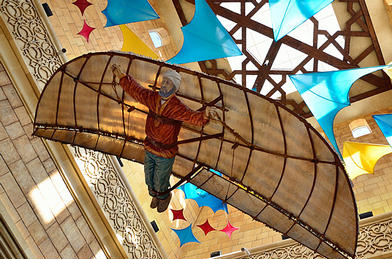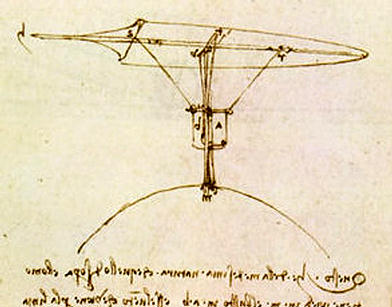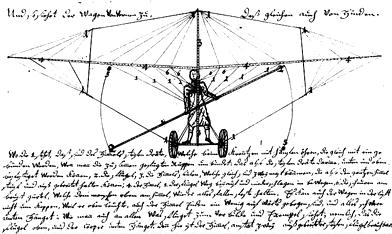 Pre-Cayley Airplanes
Pre-Cayley Airplanes
Sir George Cayley is generally considered to have invented the fixed-wing airplane because he was the first to define it in scientific terms, the first to conduct aeronautical experiments to explore the concept, and -- most important -- the first to publish his ideas. However, he was not the first person to propose or build fixed wing flying machines.
Kites, of course, are tethered fixed-wing flying machines. They originated in China about 500 BCE and soon developed into sophisticated devices, some capable of lifting a man into the air. In 559 CE Yuan Huangtou, a royal prince in a deposed family, was held captive with other political prisoners by the conqueror Gao Yang. In a grizzly parody of a Buddhist ceremony in which caged birds are released, Gao strapped his prisoners to paper-and-bambo kites and forced them to fly from a 110-foot (33-meter) tower. All died but Prince Yuan, who after "riding a hard wind" for some distance, touched down safely and escaped for a time.
In 1282 CE, Marco Polo visited Weifang in eastern China where he saw a sailor carried aloft on a kite in a ceremony that was meant to divine the success of an impending ship voyage. Polo reportedly brought a Chinese kite with him when he returned to Venice, Italy and introduced the kite to the West. Over the ensuing centuries, kite-flying became a popular pastime in Europe. By the end of the eighteenth century, kites were being used to take instruments aloft for scientific research. But there is no record that anyone prior to Cayley attempted to develop the kite into a free-flying aircraft. (Cayley's first airplane was a kite on a stick.)
The first recorded manned flight of a fixed-wing aircraft occured in Andalusia (Muslim Spain) in 875 CE. Abbas ibn Firnas, a scientist and musician in Cordova, built a tail-less glider and made a successful flight followed by an unsuccessful landing -- he badly injured his back. Nonetheless, he was the first to study the mechanics of flight and conclude that fixed wings were the way to go. There is a crater on the Moon named in his honor.

A conceptional model of ibn Firnas' tailess glider (no
plans or drawings have survived) on display in a mall in Dubai.
In the early 1500s, Leonardo Da Vinci designed several types of flying machines -- ornithopters (flapping-wing machines), helicopters, parachutes, and one glider with a single fixed wing. These drawings were collected in his notebooks, never intended for publication. After Da Vinci's death in 1519, the notebook pages were scattered and many were lost. Those that were preserved remained obscure until Jean Paul Ritcher traveled around Europe copying them, then published them in 1888. By this time, technological progress had marched past Da Vinci and although his aircraft designs were visionary for his time, they were little more than curiosities in the late nineteenth century. Consequently, they had no impact on the development of the airplane.

Da Vinci's glider. The pilot stood with his feet at
"m" and operated controls at "a" and "b."
Remember, Da Vinci wrote backwards -- the labels on his drawings are
reversed.
In 1764, Melchior Bauer of Saxony approached both King George III of England and Fredrick the Great of Prussia to fund the development of a "Cherub Chariot" with fixed wings set at a dihedral angle and propelled by flappers. Their majesties were less than encouraging; Fredrick told Bauer, "A heavy affliction has disturbed thy brain." Bauer abandoned his project. Had he persevered, he might have captured the honor now accorded Cayley.

Bauer's flapper-propelled airplane.